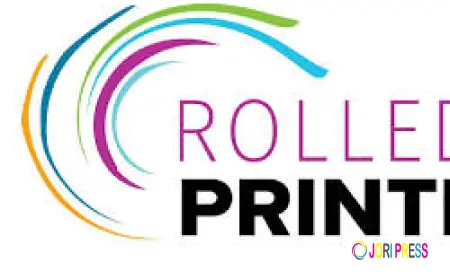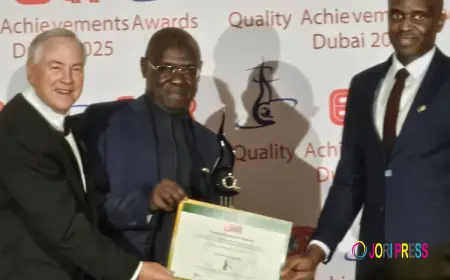Can Acoustic Vibration Lift Particles? Acoustic Measurement Microphone Capture Voice
TME Systems specialize in marketing, distribution, application, and servicing broad-based high technology products. We firmly believe that the business’s success is pivoted by our team of experienced and dedicated employees, together with the support of our partners and customers, backed by a strong technical sales and engineering team.

Sound waves cause vibration in particles of a medium (such as air or water); this is known as acoustic vibration. These vibrations are simply variations in pressure that travel through the medium, producing areas of compression and rarefaction. However, when the vibrations are strong and tuned correctly, they can have some measurable interaction with the objects.
The Science Behind Sound Waves and Vibrations
Sound waves are longitudinal waves, that is, the motion of particles is in the same direction as the wave moves. A sound wave, as it travels, transfers energy by a series of collisions of particles. This is the reason why sound can travel through air and solid, but not a vacuum.
Can Acoustic Vibration Lift Particles?
Yes, particles can be lifted by the acoustic vibration in a procedure known as acoustic levitation. Pressure nodes are formed when sound waves form standing waves in air or liquid, and these have the capacity to entrap and suspend minute particles. This effect finds application in scientific experiments, research on materials, and non-contact particle manipulation.
Applications of Acoustic Levitation in Science and Industry
Non-Contact Material Handling
Contactless manipulation of delicate materials through acoustic levitation helps in eliminating contamination in chemical or pharmaceutical processes.
Pharmaceutical and Chemical Research
Acoustic levitation helps scientists to mix or crystallize chemicals without any physical containers, to have a pure reaction and better sample analysis.
Space and Microgravity Experiments
NASA employs acoustic levitation, which mimics microgravity and investigates fluid dynamics of space-like conditions.
Advantages and Limitations of Acoustic Vibration Technology
Benefits of Precision and Clean Handling
- There is no reduction in contamination due to any physical contact.
- Allows handling of sensitive or sensitive materials.
- Gives a testability that is controlled and repeatable
Limitations of Acoustic Levitation Systems
- Only efficient when small particles.
- Power and control are needed to be high.
- Stability can also be disturbed by environmental noise or vibration
How Acoustic Vibrations Work
Acoustic vibrations require three primary factors:
1. Source of Vibration
The very first instance of acoustic vibration is a vibrating source, for example, a guitar string, speaker diaphragm, or vocal fold. The source defines both the frequency (pitch) and the amplitude (loudness) of the sound produced.
2. Medium of Transmission
The vibration must have a medium through which it travels. Sound travels at a rate of about 343 meters/second in the air, while in water and solids, it is even faster because of the closely packed particles.
3. Receiver or Detector
The console gets the vibration eventually through a sensor, a microphone, or a human ear. The eardrum of a human being first vibrates according to the sound waves that have penetrated the ear cavity, is then turned into electrical signals, and finally perceived by the brain as sound.
What Is an Acoustic Measurement Microphone?
An acoustic measurement microphone is a device with a very high level of accuracy that is normally used for determining sound pressure levels (SPL) with a very high degree of precision over a wide frequency range.
These microphones are commonplace in laboratories, soundproofing research, loudspeaker design, and environmental noise analysis. Their primary aim is to study the behavior of sound, not to record it with a creative intent.
Can an Acoustic Measurement Microphone Capture Voice?
Yes, the voice can be very precisely recorded with an acoustic measurement microphone. These microphones are designed for sound analysis with high accuracy, and they have a flat frequency response and low distortion characteristics.
Their ability to record natural, uncolored speech makes them suitable for research, testing of audio in public places where clarity and absolute reproduction of sound are the most important, and professional settings where clarity and absolute reproduction of sound are the most important.
Pros and Cons of Using Measurement Mics for Voice
Pros:
- Very precise and planar sound response.
- Best in voice frequency patterns analysis.
- Very good at science and also testing.
Cons:
- Much prefers the warmth of studio microphones.
- May may sound sterile or lifeless musical use.
- One that needs a good calibration before use.
Key Differences from Regular Microphones
|
Feature |
Acoustic Measurement Microphone |
Studio / Voice Microphone |
|
Purpose |
Measure sound accurately |
Capture sound artistically |
|
Frequency Response |
Flat (uncolored) |
Shaped (enhanced mids/highs) |
|
Dynamic Range |
Very wide |
Moderate to wide |
|
Sensitivity |
Extremely sensitive |
Optimized for vocals |
|
Output Sound |
Neutral, clinical |
Warm, pleasant |
|
Applications |
Testing, calibration, research |
Recording, performance, broadcasting |
Ideal Use Cases for Acoustic Measurement Microphones
Acoustic Analysis and Room Calibration
These mics are used by audio engineers to test speakers and room acoustics due to their accurate reflections, reverberation times, and frequency responses.
Environmental and Industrial Sound Testing
They are important in noise monitoring, factory testing, and automotive acoustic research.
Research and Educational Applications
They are commonly used in scientific experiments in universities and laboratories on the propagation of sound and resonant, or acoustics of materials.
When and How to Use Acoustic Measurement Microphones for Voice
Setup Tips and Precautions
In case you wish to use a voice measuring mic:
- Record in the treated room to minimize reflections.
- Incorporate a low-noise floor preamp.
- Keep the distance uniform.
Post-Processing Techniques for Improved Clarity
To make recordings more pleasant, apply:
- EQ additions (add warmth between 200400 Hz)
- Balance Dynamics compression.
- Reverb to provide a sense of space.
Technical Specifications That Affect Voice Recording Quality
Polar Pattern and Directionality
The majority of them are omnidirectional and pick up the sound equally on all sides, and are not best suited to isolating the voice against background noise.
Sensitivity and Dynamic Range
They are good at recording fine sound changes, and hence they are effective in the study of acoustics.
Calibration and Measurement Precision
Precision calibration will give exact readings, but will not enhance tonal quality in artistic voice recording.
Conclusion
The acoustic vibration is important in the study of interactions of sound and matter. Since the time of levitating particles, this technology has made a bridge between science and sound, allowing research, industry, and audio testing to be done with amazing accuracy and control.
What's Your Reaction?
 Like
0
Like
0
 Dislike
0
Dislike
0
 Love
0
Love
0
 Funny
0
Funny
0
 Angry
0
Angry
0
 Sad
0
Sad
0
 Wow
0
Wow
0



















































